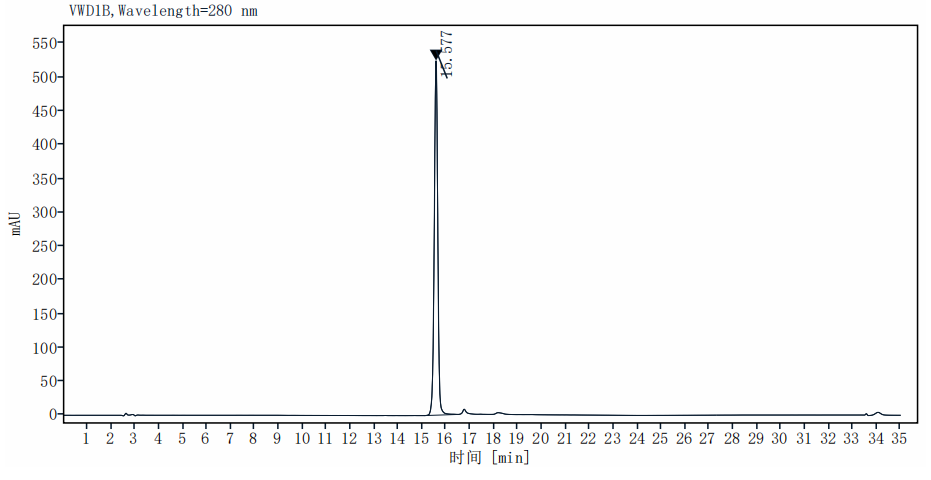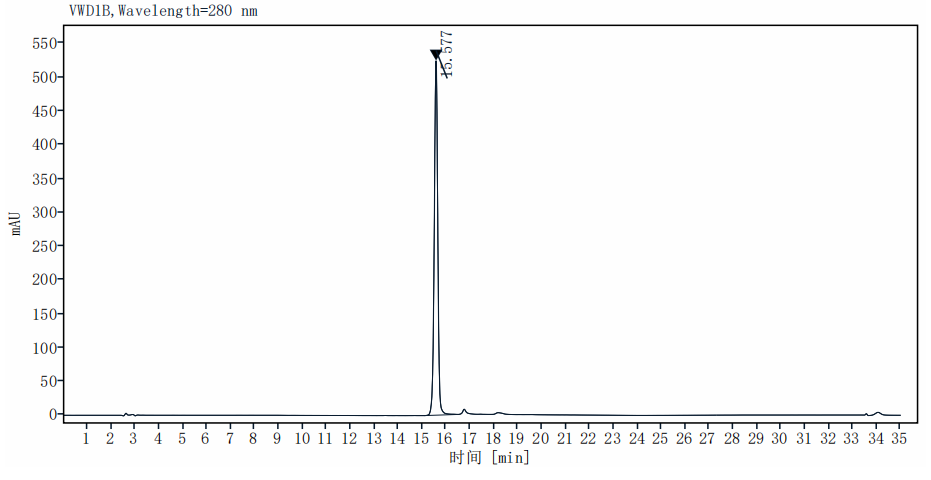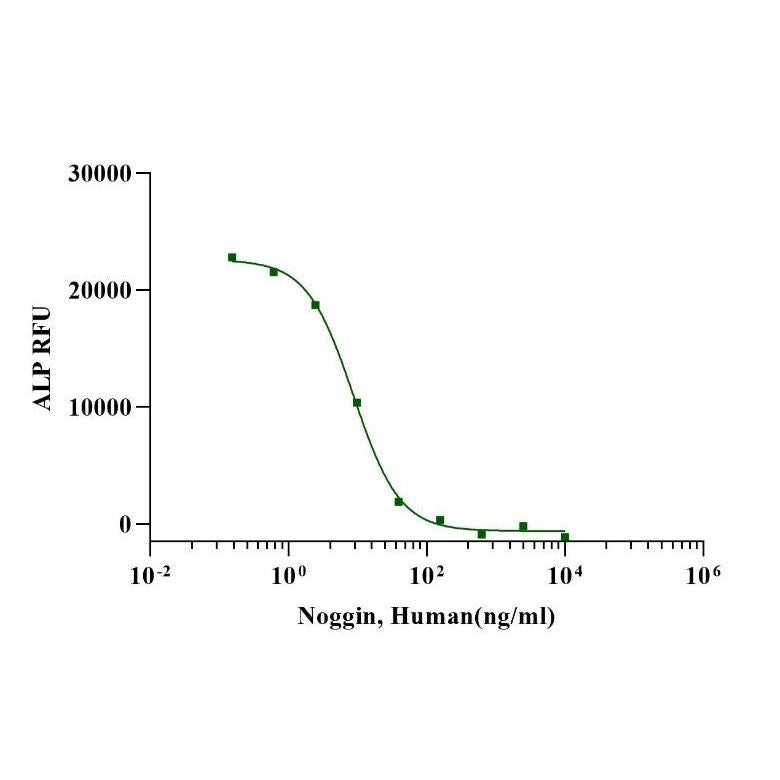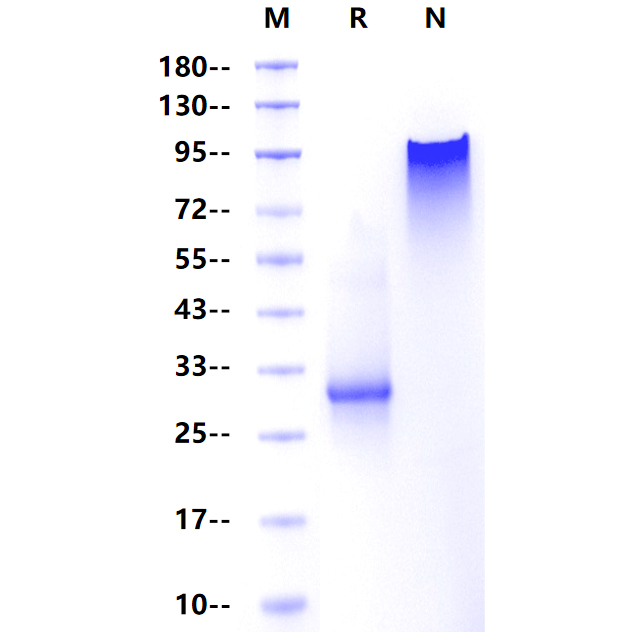Product Details
Product Details
Product Specification
| Species | Human |
| Synonyms | Noggin; SYM1; SYNS1; NOG |
| Accession | Q13253 |
| Amino Acid Sequence | Gln28-Cys232 |
| Expression System | HEK293 |
| Molecular Weight | 30kDa (Reducing) |
| Purity | >98% by SDS-PAGE & RP-HPLC |
| Endotoxin | <0.1EU/μg |
| Conjugation | Unconjugated |
| Tag | No Tag |
| Physical Appearance | Lyophilized Powder |
| Storage Buffer | PBS, pH7.4 |
| Reconstitution | Reconstitute at 0.1-1 mg/ml according to the size in ultrapure water after rapid centrifugation. |
| Stability & Storage |
· 12 months from date of receipt, lyophilized powder stored at -20 to -80℃. · 3 months, -20 to -80℃ under sterile conditions after reconstitution. · 1 week, 2 to 8℃ under sterile conditions after reconstitution. · Please avoid repeated freeze-thaw cycles. |
Background
Noggin is a 67 kD homodimeric glycoprotein, which was the first BMP antagonist to have its crystallographic structure resolved at high resolution. The Noggin structure shares with that of its BMP ligands, the TGF-β cytokine superfamily fold of a cystine-knot domain, containing two β-strand finger-like loops. Noggin exists as a dimer of identical subunits and resembles a flat “butterfly-like” shape with the helical regions of the two subunits in close contact with each other as the body of the butterfly, and the β-strands of each subunit projecting outward as wings in parallel with each other, and at some 45° away from the axis of symmetry of the dimer. In mice heterozygous for Noggin gene deletion, various skeletal abnormalities arise due to cartilage hyperplasia and failures to initiate joint formation. All these abnormalities may be attributed to inadequate attenuation of BMP activity in the affected tissues. Noggin has been reported to be a specific inhibitor of BMP activity in mesenchymal cells. Noggin regulates the response of undifferentiated cells to BMPs through a negative feedback mechanism that maintains the cells in an undifferentiated state, thus controlling the rate of cell growth. The suggested mechanism of inhibition is based on the binding of Noggin to BMPs, which prevents them from interacting with cell surface receptors. Because of the feedback process, the BMPs in turn induce the mesenchymal cells to express Noggin. Once the process of cell differentiation and proliferation is activated, the production of Noggin is reduced. Noggin has various activities of relevance to potential future regenerative strategies for neurological disorders and injury. Administration of recombinant Noggin has been reported to improve brain recovery from ischemic injury by promoting microglia activation. Beyond regulating the fate of neural cells, Noggin has been shown to be a potent inducer of adipocyte formation in mesenchymal stem cell cultures.
Picture
Picture
Bioactivity
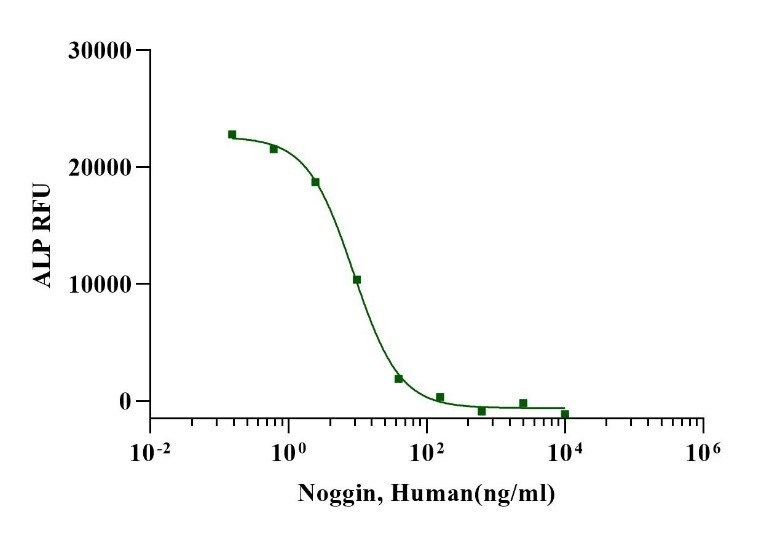
SDS-PAGE
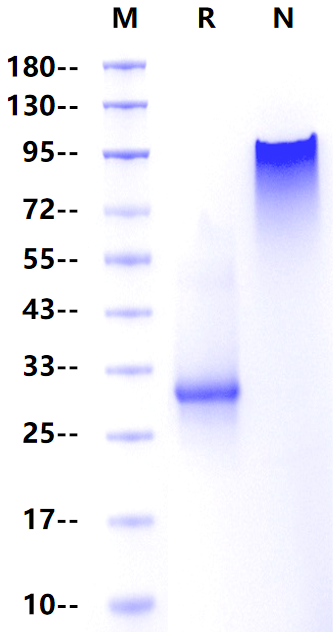
RP-HPLC
